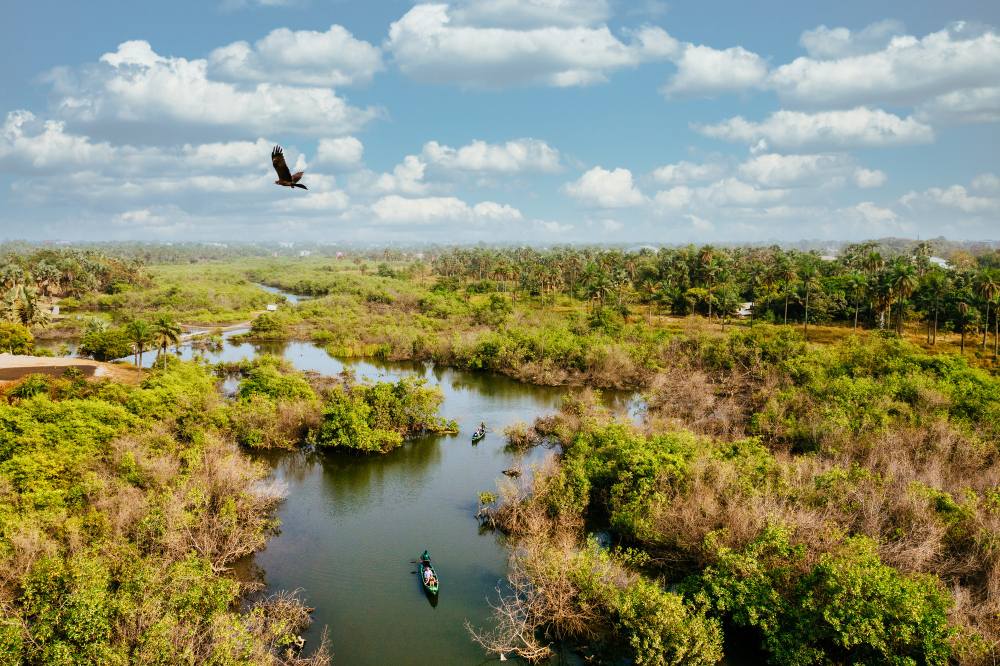The Intricate Web of the Wild Florida Food Chain



Every ecosystem on our planet boasts a delicate balance, an invisible web woven by the interaction of numerous species. The Florida wetlands are no exception. Home to an array of flora and fauna, the Sunshine State is especially celebrated for its unique mix of species and its apex predators, such as the American alligator. This is a story as intricate as it is fascinating, detailing the lives of hunters and the hunted, and how each member plays a crucial role in the wild Florida food chain. If you're ready to explore the wild heart of Florida and get behind the scenes of its intricate food web, join us for an adventurous deep dive.
At the heart of Florida's ecosystem are its wetlands, a critical environment for a variety of animal and plant species. This expanse of water—ranging from shallow beach waters to expansive swamps—is home to a unique mix of foliage and creatures alike. The Everglades, a massive subtropical wetlands located in the southern portion of the state, is perhaps the most renowned of Florida's wetlands. Whether you’re navigating the labyrinthine system of waterways on an airboat or observing from a safe distance, the wetlands offer a glimpse into a thriving ecosystem that supports a complex food chain.
In the first link of the food chain, we find the producers—algae, aquatic plants, and phytoplankton. These simple life forms harness the energy of the sun through photosynthesis, converting it into organic material that serves as the foundation for the entire food chain. In Florida's wetlands, marsh grasses, water lilies, cypress trees, and sawgrass are the main producers, converting sunlight into energy and beginning the transfer of life within the ecosystem.
The next tier of the food chain is populated by a variety of herbivorous creatures that feed on the primary producers. This includes aquatic insects like dragonflies, various species of snails and mollusks, and a plethora of crustaceans, such as crayfish and shrimp. These animals are critical in controlling plant growth and act as a crucial link in the food chain by supporting predatory species.
Dominating the middle rung of the chain are the omnivores—fish, turtles, and certain birds. These creatures feed both on plant matter and smaller organisms, adapting their diet to the food sources available. Popular species such as the largemouth bass, gar, catfish, and the iconic Florida softshell turtle all play significant roles in maintaining the health of the wetlands population by controlling the numbers of smaller creatures like insects and fish.
The top of the food chain in the Florida wetlands is adorned by the presence of apex predators like alligators, crocodiles, and wading birds such as herons, egrets, and even the majestic bald eagle. These hunters rely on their keen senses and evolved traits to effectively hunt and regulate the populations of their prey. The American alligator, a keystone species in the region, acts as a natural steward, ensuring a balanced wetland ecosystem through its predation on various species.
Humans are an inseparable part of the Florida food chain, with our activities and interventions influencing every link within it. Our impact, both positive—such as conservation efforts—and negative—like habitat destruction and pollution—can have far-reaching effects on the wetland ecosystem. Understanding and respecting the natural balance of the food chain is crucial for the preservation of Florida's wetlands and their diverse inhabitants for future generations.
With the realization of the importance of the Florida wetlands and the species that inhabit it, numerous conservation efforts are underway. From education programs to habitat restoration initiatives, organizations and individuals are working tirelessly to protect this unique environment. By supporting these efforts and choosing sustainable practices, we can help maintain the integrity and balance of the wild Florida food chain.
The best way to truly appreciate the complexity of the food web in the Florida wetlands is to experience it firsthand. Airboat tours are a popular and exciting way to immerse yourself in the heart of the ecosystem, as knowledgeable guides lead you through the maze of waterways, pointing out the various elements of the food chain at work. Visiting a wildlife sanctuary or the Everglades National Park provides a more immersive educational experience, allowing you to observe animals in their natural habitat while learning about their roles within the ecosystem.
The interconnectedness of the wild Florida food chain is not just a local treasure but a global example of the intricate balance that supports life on Earth. By understanding and respecting the roles of each species within this web, we gain a deeper appreciation for the complexity and beauty of the natural world. Whether you're a local Floridian or a visitor, the next time you find yourself exploring the state's great outdoors, take a moment to consider the vibrant food chain that's quietly thriving all around you. Remember, we're all part of this delicate web, and our actions can either support or disrupt this beautiful symbiosis.
For a chance to experience the wonder of the Florida wetlands, If you'd like to experience airboat tours in Orlando, FL, contact Switchgrass Outfitters for a guided airboat tour that promises a unique perspective on this thriving ecosystem. Come, witness the magic of the wild Florida food chain, where every glance offers a new chapter in the story of life.